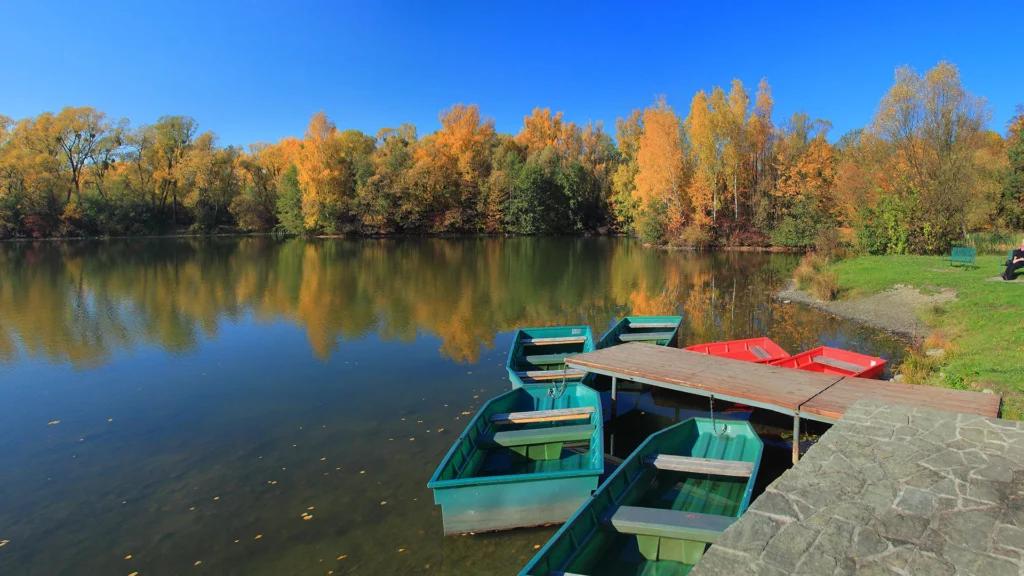Karviná is a charming town that offers picturesque landscapes and a reflection of history in its monuments, offering a unique combination of cultural heritage. Karviná Castle, dating back to the 14th century, is proud of the town’s rich past. Explore its well-preserved interior and admires architectural details that have stood the test of time.
The town is surrounded by the picturesque Silesian Beskids, offering breathtaking views and numerous opportunities for hiking, biking and other activities. A walk through the Karvinské vrchy Nature Park will provide a peaceful immersion in nature and the surrounding villages.

The Karviná Museum presents a fascinating collection of artifacts, works of art and historical exhibitions. Traditional Czech restaurants and taverns provide a true taste of the region.
Location
Karviná is a northeastern Czech Republic. The city is located east of Ostrava, on the eastern bank of the Olza River, near the border with Poland.
Town Square

The market square in Karviná is a very pretty and architecturally beautiful place that is definitely worth a visit if you are planning to visit this city.
Masarykov Square with the fountain, town hall and other historical buildings in Karviná is a great place to take pictures with historical heritage in the background.
Karviná-Darkov Bridge (Most Sokolovských hrdinů)

The Bridge of Sokolovských hrdinů in Karviná-Darkov (locally called Darkovský most) is a reinforced concrete road bridge over the Olša River and a prominent landmark near the spa in Darkov. The bridge is declared a cultural monument of the Czech Republic.
It was built in 1925 as a connection for cars between parts of Darkov. In modern history, it survived the floods of 1997. During the reconstruction, the original reliefs were preserved. Currently, it serves pedestrians, cyclists and cars.
Palace Frysztat


One of the most important monuments of the city is the Palace and you absolutely have to visit it. Beautifully recreated interiors with equipment from the 18th-19th centuries emphasize the historical times.
It is located in the very center of the city next to the market square. Frysztat was an independent town. Since the 14th century there was a wooden, Gothic castle here, built by the Cieszyn Piasts. Each season visitors can look forward to new features and events.
Lázně Darkov SPA


Lázně Darkov is a spa village and administrative part of Karviná in Karviná District. Lázně Darkov is one of the oldest iodine spas in Europe. The first mentions of the healing effects of iodine-bromine brine were recorded in 1867, when the first spa season began.
The spa specializes in the treatment of musculoskeletal, nervous and circulatory systems, as well as skin and gynecological diseases. The sanatorium is also able to treat spams in neurological patients and it provides a complete therapy for testing and training activities of daily routine and self-sufficiency recovery of the patient.
Kostel Povýšení svatého Kříže

The church is a testament to the architectural creation of the early 20th century. In 2000, the Church of the Exaltation of the Holy Cross in Strání was declared a cultural monument.
Originally a Gothic three-nave basilica with a long, non-recessed presbytery and a tower in the facade, it is built on a slope above Šantov Square. From there, it is accessible via a stone two-flight staircase leading to the entrance portal.
Church of St. Peter of Alcantara

The Roman Catholic historic church in Karviná is the parish church of the parish of St. Peter in Karviná-Doly. The church was built in 1736 in the Baroque style.
The Church of St. Peter of Alcantara stands in the part of Karviná called Doly and due to undermining it has fallen by more than 35 metres. The church is listed in the Czech Book of Records and Curiosities – it’s officially the most leaning church in the country!
Park named after Bozena Nemcova

Bozena Němcová Park in Karviná A popular place for walks not only for the inhabitants of Karviná is the Bozena Němcová Park, which is a chateau garden in Fryštát, the old part of the town. Park which covers an area of 36 hectares and was founded in 1804 in English style after the chateau was rebuilt in.
